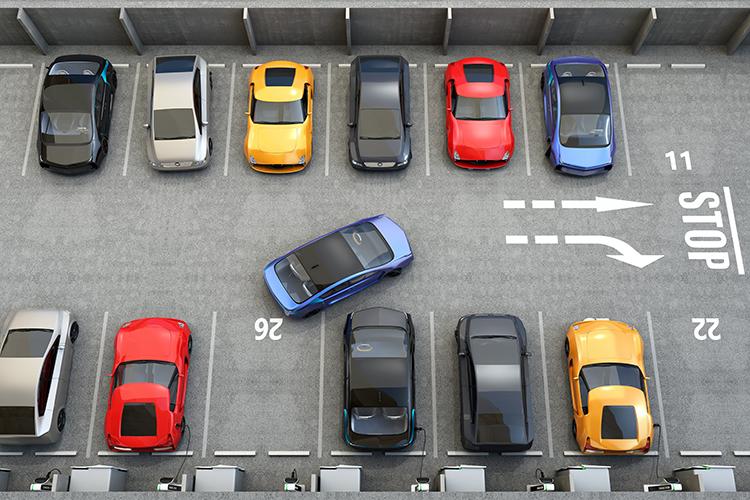A parking space is a designated area for parking that can be in a garage, lot, or on a street. Either paved or unpaved, there are specific rules and regulations that a parking place needs to maintain. How wide is a parking space?
There are no specific dimensions because the measurements depend on various factors.
Contents
The Factors That Determine Parking Space Dimensions
There are some elements that play a part in regulating parking space length and width.
Cars used to be much bigger than the models that are manufactured these days. So, the parking lots are comparatively smaller these days.
Also, American parking space is slightly bigger because the vehicles there are bigger than the vehicles in Asian countries.
The parking lots are compact and narrow in bigger cities where lands are pricey. Many garages in these cities, like New York and Bangalore, are only for compact cars.
They accommodate more vehicles by being narrower than traditional parking spaces.
In other words, a parking spot has to be large enough for vehicles to fit either by parallel parking, angled parking, or perpendicular parking.
How Wide Is A Parking Space?
The dimensions of parking space could vary from country to country. Here are the measurements of these areas in some countries:
1. North America
The average width of a parking space in North American countries ranges from seven to nine feet. Perpendicular and angled parking lots should have that much width because the car doors need space to open.
However, six feet width is possibly enough for a parallel parking lot, especially if it is located in a low-traffic neighborhood.
How long are parking spaces in North American countries? The length is often difficult to regulate because there is no specific rule about the boundary between parking space and driving area.
However, the length could be between 10 and 18 feet in case of perpendicular and angled parking lots.
Most parking spaces in America are between 16 and 20 feet deep because the vehicles there are bigger than in other countries.When it is a parallel parking lot, the length increases from 20 to 24 feet.
2. The United Kingdom
How wide is a parking space in the UK? Is it similar to North American countries? Not really.
In this country, parking lots have to be at least 16 feet wide and 7.9 feet long.

SEE MORE:
3. Other Countries
France follows the Norme NF P 91-100 standard for deciding the measurements of a parking lot. It has to be at least 7.2–7.5 feet wide.
Parking garages in Australia are built by following the standards in the AS2890. These places have to be at least 7.9 feet wide and 17.7 feet long.
However, narrow parking spaces are losing favor in various countries because they cannot accommodate larger vehicles.
For example, a Swiss Association that is in charge of monitoring parking spaces in Switzerland drew attention to this issue in 2016.
FAQs
1. Are parking spaces in Europe the same size everywhere?
No, parking space sizes can differ across Europe. For example, Germany recommends a minimum width of 2.5 meters (about 8.2 feet) for standard parking spaces, while Italy and France have slightly varying standards, generally around 2.3 to 2.5 meters.
2. What is the standard size for a parking space in Australia?
Australian standards suggest a minimum width of 2.4 meters (about 7.9 feet) for parking spaces in most new developments.
3. Do parking space sizes vary for different types of vehicles?
Yes, parking spaces may be wider for disabled access, loading zones, or for specific types of vehicles like motorcycles, compact cars, or electric vehicles, which might have dedicated charging spots.
4. How do urban and rural areas differ in terms of parking space sizes?
Urban areas, especially in cities with dense populations, might have smaller parking spaces to accommodate more cars, whereas rural areas might offer more generously sized spaces due to fewer space constraints.
5. Is there a global standard for parking space sizes?
There is no single global standard for parking space sizes; they are determined by local regulations and standards, which take into account vehicle sizes, urban planning considerations, and local needs.
6. How are parking spaces for disabled individuals regulated in terms of size?
Parking spaces for disabled individuals are often wider than standard spaces to accommodate vehicles with ramps or additional equipment.
The size can significantly exceed standard parking dimensions and is regulated by specific laws in many countries.
7. Can the width of a parking space impact parking availability and urban planning?
The width of parking spaces can influence the number of spots available in a given area, affecting both parking availability and urban planning strategies.
Narrower spaces allow more cars to fit into the same area, but this can affect the ease of parking and the risk of damage to vehicles.
Check out this video from Vox for more interesting facts on how to fight climate change with parking lots!
Conclusion
The width of parking spaces varies by country, influenced by local vehicle sizes, urban design, and regulations.
These standards reflect ongoing changes in vehicle design, urban planning, and sustainability efforts, indicating potential future adjustments in parking space dimensions worldwide.



